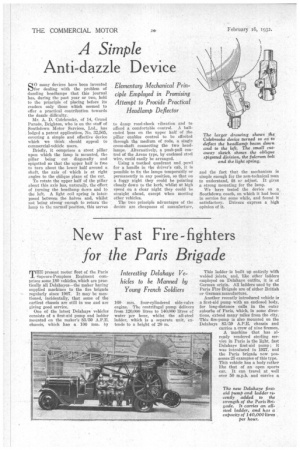A Simple Anti-dazzle Device
Page 54

If you've noticed an error in this article please click here to report it so we can fix it.
Elementary Mechanical Principle Employed in Promising Attempt to Provide Practical Headlamp Deflector
S0 many devices have been invented for dealing with the problem of dazzling headlamps that this journal has, during the past year or two, held to the principle of placing before its readers only those which seemed to offer a practical contribution towards the dazzle difficulty.
Mr. A. D. Colebrooke, of 14, ("rand Parade, Brighton, who is on the staff of Southdown Motor Services, Ltd., has . lodged a patent application, No. 32,565, covering a simple and effective device which we think should appeal to commercial-vehicle users.
Briefly, it comprises a stout pillar upon which the lamp is mounted, the pillar being cut diagonally and spigotted so that the upper half is free to turn about the lower half around a shaft, the axis of which is at right angles to the oblique plane of the cut.
To rotate the upper half of the pillar about this axis has, naturally, the effect of turning the headlamp down and to the left. A light coil spring is interposed between the halves and, whilst not being strong enough to return the lamp to the normal position, this serves to damp road-shock vibration and to afford a comfortable control. A ballended boss on the upper half of the pillar enables control to be effected through the medium of rods, a single cross-shaft connecting the two headlamps. Alternatively, a push-pull control of the Arens type, by enclosed steel wire, could easily be arranged.
Using a toothed quadrant and pawl for a handle in the driver's cab, it is possible to fix the lamps temporarily or permanently in any position, so that on a foggy night they could be pointing closely down to the kerb, whilst at high speed on a clear night they could be straight ahead, except when meeting other vehicles.
The two principle advantages of the device are cheapness of manufacture, and the fact that the mechanism is simple enough for the non-technical man to understand, fit or adjust. It gives a strong mounting for the lamp.
We • have tested the device on a Southdown coach, on which it had been in service for some while, and found it satisfactory. Drivers express a high opinion of it.




































































































